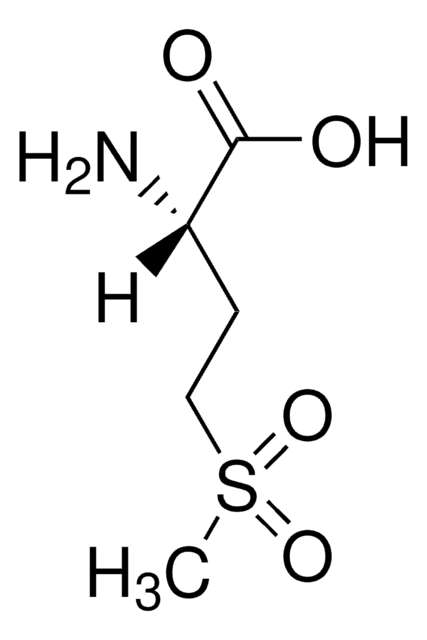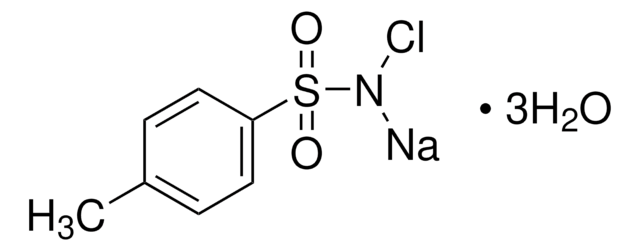56250
trans-4-Hydroxy-L-proline
≥99.0% (NT), BioXtra
Synonim(y):
(2S,4R)-4-Hydroxypyrrolidine-2-carboxylic acid, Hyp
About This Item
product name
trans-4-Hydroxy-L-proline, BioXtra, ≥99.0% (NT)
linia produktu
BioXtra
Poziom jakości
Próba
≥99.0% (NT)
Postać
solid
aktywność optyczna
[α]20/D −76.0±1.5°, c = 5% in H2O
zanieczyszczenia
≤0.3% foreign amino acids
pozostałość po prażeniu
≤0.1% (as SO4)
strata
≤0.1% loss on drying, 110 °C
kolor
colorless to white
mp
273 °C (dec.) (lit.)
ślady anionów
chloride (Cl-): ≤100 mg/kg
sulfate (SO42-): ≤100 mg/kg
ślady kationów
Ca: ≤10 mg/kg
Cd: ≤5 mg/kg
Co: ≤5 mg/kg
Cr: ≤5 mg/kg
Cu: ≤5 mg/kg
Fe: ≤5 mg/kg
K: ≤50 mg/kg
Mg: ≤5 mg/kg
Mn: ≤5 mg/kg
NH4+: ≤100 mg/kg
Na: ≤50 mg/kg
Ni: ≤5 mg/kg
Pb: ≤5 mg/kg
Zn: ≤5 mg/kg
Zastosowanie
peptide synthesis
ciąg SMILES
O[C@H]1CN[C@@H](C1)C(O)=O
InChI
1S/C5H9NO3/c7-3-1-4(5(8)9)6-2-3/h3-4,6-7H,1-2H2,(H,8,9)/t3-,4+/m1/s1
Klucz InChI
PMMYEEVYMWASQN-DMTCNVIQSA-N
Szukasz podobnych produktów? Odwiedź Przewodnik dotyczący porównywania produktów
Działania biochem./fizjol.
Inne uwagi
Kod klasy składowania
11 - Combustible Solids
Klasa zagrożenia wodnego (WGK)
WGK 1
Środki ochrony indywidualnej
Eyeshields, Gloves, type N95 (US)
Certyfikaty analizy (CoA)
Poszukaj Certyfikaty analizy (CoA), wpisując numer partii/serii produktów. Numery serii i partii można znaleźć na etykiecie produktu po słowach „seria” lub „partia”.
Masz już ten produkt?
Dokumenty związane z niedawno zakupionymi produktami zostały zamieszczone w Bibliotece dokumentów.
Klienci oglądali również te produkty
Nasz zespół naukowców ma doświadczenie we wszystkich obszarach badań, w tym w naukach przyrodniczych, materiałoznawstwie, syntezie chemicznej, chromatografii, analityce i wielu innych dziedzinach.
Skontaktuj się z zespołem ds. pomocy technicznej
